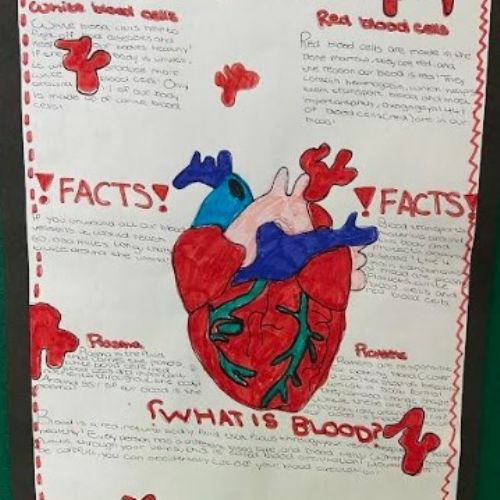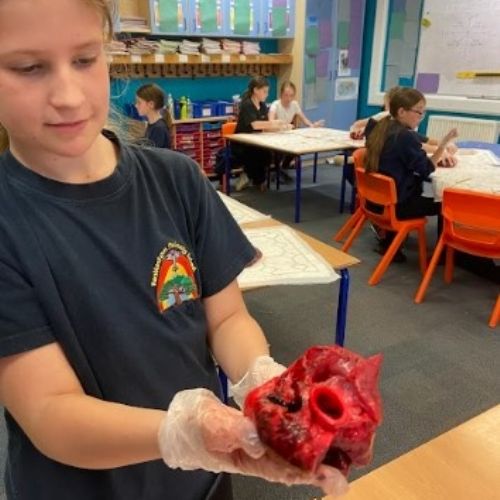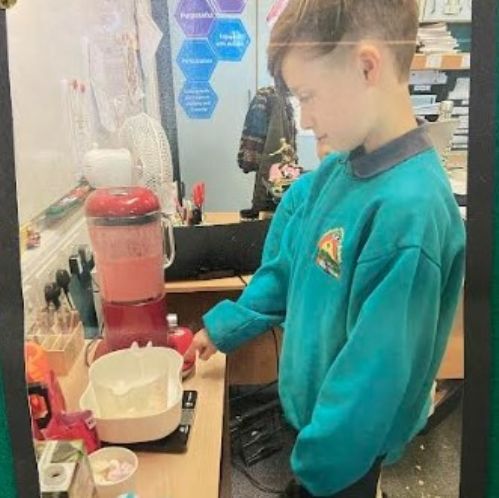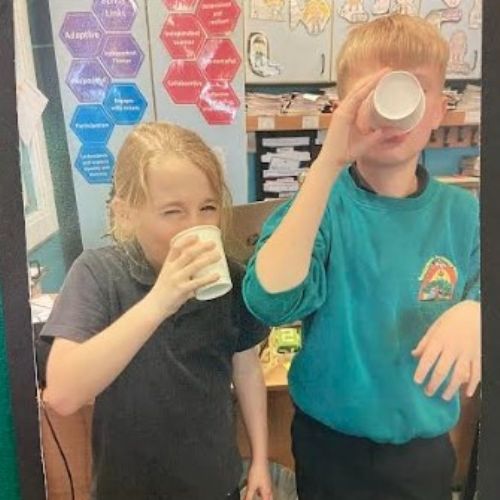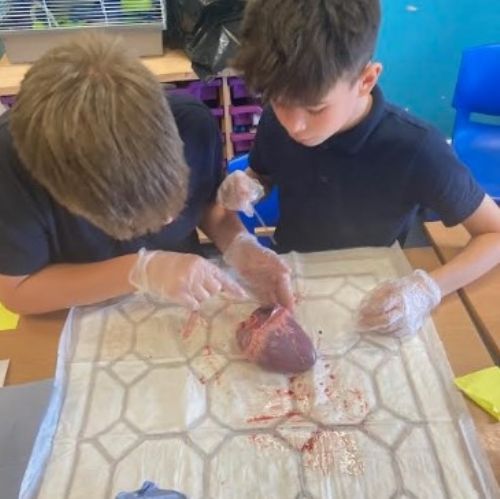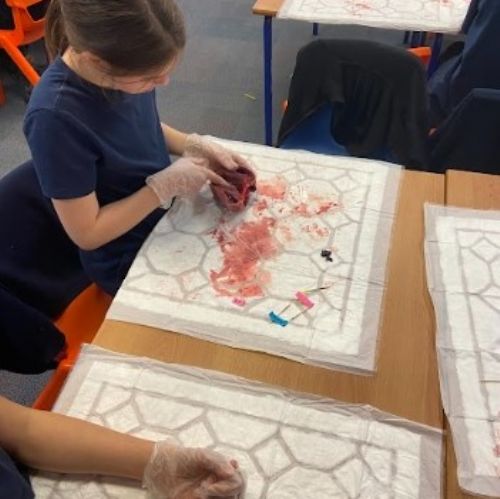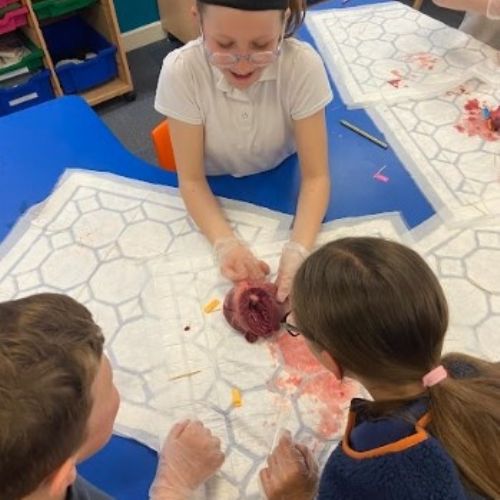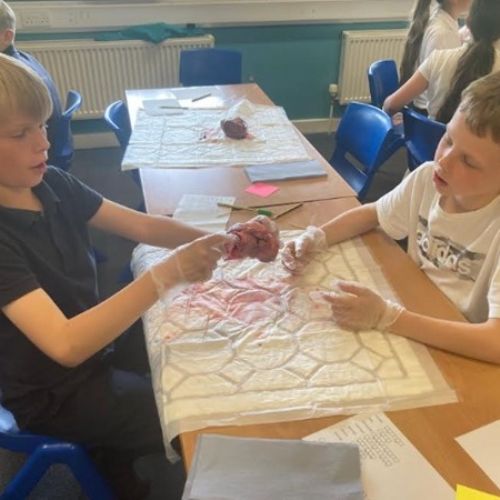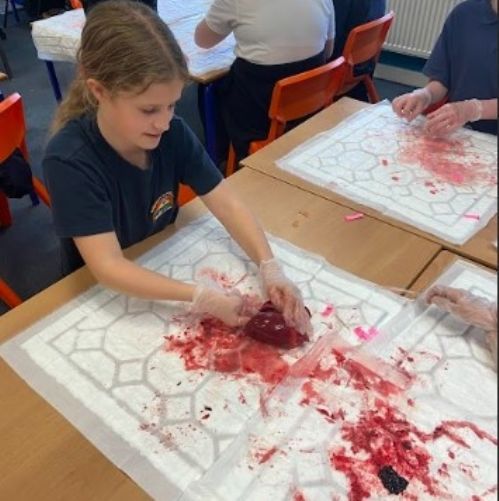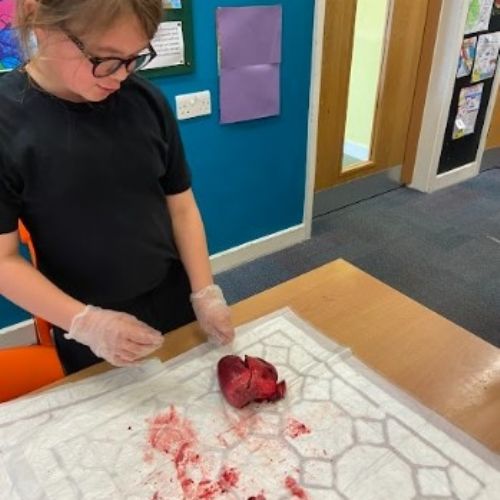Science and the cardiovascular system
Our Year 5 and 6s have been looking at the cardiovascular system this term in Science. We started off learning the different components of the blood: red blood cells, white blood cells, platelets and plasma. The children were really fascinated learning about their own blood, particularly how white blood cells engulf bacteria and viruses, and how platelets clot the blood. Riley said that “Now every time I fall over, I check my cut to see my scab and know its platelets working!”
To help solidify our learning and know the ratios of each, we created our own blood smoothies. We used frozen raspberries as our red blood cells, marshmallows to represent white blood cells, sprinkles as platelets and pineapple juice as our plasma. They received mixed reviews as far as taste are concerned, with Holly saying, “The smoothies helped the amount of each blood cell stick in my mind, but I wasn’t a fan of drinking it because I found it quite lumpy!”
After we were happy with the components of blood, we explored what blood vessels exist in our body, namely veins, arteries and capillaries. Fletcher “couldn’t believe that if they we unwound them all and laid them out they would be able to go more than twice round the world”. We then looked at the organ responsible for pumping the blood through these vessels: the heart. We learned that the average adult has 5 litres of blood in their body and the heart pumps this amount of blood in a minute. We got the stopwatch out and tried to beat the clock, scooping 5 litres of make-shift blood from container into another. Zac didn’t manage to beat the heart, “It was harder than I thought, the heart works harder than I thought!”
This gave us an appreciation of how much work the heart has to do, but we wanted to learn a little more about the structure of it. We contacted the local butcher and arranged to have pig hearts ready for dissection! Pig hearts are often used for dissection as anatomically and size-wise they are very similar to our own. The children were a little apprehensive initially, but when they realised that the heart is often discarded they were really happy that we were creating a purpose for them.
There were a lot of buzz and chatter before the day finally arrived. The children were given latex gloves, cutting implements and a sheet. We refreshed what we already knew about the structure of the heart and then it was time for each group of three to be given one! We first looked at the weight, and size of the heart. The children had various thoughts, but generally, due to the importance of the heart, they thought it was a little smaller than they had anticipated. We identified the aorta, vena cava, pulmonary artery and pulmonary vein.
It was then time for our dissection, we cut into the heart alongside the coronary sulcus, which separates the atriums and the ventricles. We located the four chambers of the heart and recognised that the left side is larger as it needs to pump blood all around the body as opposed to just the lungs. We were also able to find the chordae tendinae, otherwise known as heartstrings, which pull the valves. Showing a real example of the expression, ‘pulling at my heartstrings!’
The children did really well, Ava said that she was “really nervous beforehand, but it was really great fun” and Hollie said that she found it all “very interesting and gave me a good understanding of how the heart worked”. A day that I am sure won’t be forgotten for a while! We will be finishing off our module by conducting an experiment to see how exercise affects our pulse rate, and to be able to provide a scientific reason for any changes.


